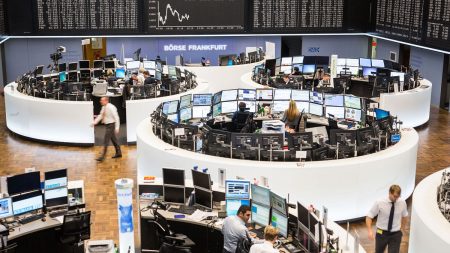In November 2024, Germany’s labor market displayed unexpected resilience amid concerns over rising unemployment. The Federal Employment Agency (Bundesagentur für Arbeit) reported that the number of unemployed people increased by only 7,000 to reach 2.86 million, a figure significantly less than analysts’ forecasts of a 20,000 rise. While October had already seen a jump of 27,000 unemployed individuals, November’s numbers suggest that the labor market is still managing to absorb the impact of job cuts announced by major firms like Volkswagen and Schaeffler. Despite these job reductions, the overall unemployment rate stood at 5.9%, reflecting a complex picture of stability in light of recent upheavals within the industrial sector.
Interestingly, while the number of unemployed people in November decreased by 17,000 compared to October, there was a stark increase of 168,000 individuals when compared to the same month last year. In terms of seasonally adjusted figures, the unemployment rate remained unchanged at 6.1%, marking the same level as the previous month; however, it was the highest rate recorded since February 2021. The total number of unemployed individuals reached approximately 3.55 million, which also translates to an increase of 109,000 compared to November 2023. This simultaneous rise illustrates the ongoing challenges facing the labor market, which continues to grapple with the effects of economic strain and restructuring.
Further complicating the labor market situation, job vacancies dropped to 668,000 in November, a decrease of 65,000 from the previous year. This decline signifies a slowdown in hiring trends, suggesting that employers are hesitant to take on new workers amidst an uncertain economic climate. The reduced hiring activity is a crucial indicator of economic confidence, hinting at broader issues within the economy that are influencing company decisions on workforce expansion. The combination of job cuts from significant corporations and declining job openings paints a worrisome overall picture for the job market leading into the winter months.
In tandem with the labor market news, Germany also released disappointing retail sales figures for October, which further reflect the nation’s economic challenges. Data from the Federal Statistical Office revealed a month-on-month retail sales decline of 1.5%, contrasting sharply with a previous increase of 1.6% in September. This drop was unexpectedly low, especially given analysts’ expectations for a modest growth of 0.3%. The sales reduction was notably pronounced in the online and mail-order sectors, which fell by 2.4%, alongside a 2.2% decrease in non-food retail sales. Conversely, food sales experienced a marginal uptick of 0.1%, indicating a potential shift in consumer spending habits.
On an annual basis, the retail sales performance also underwhelmed, with year-on-year figures climbing only 1% in October, compared to 4.2% in September. This figure fell significantly short of the anticipated 3.2% increase, raising alarm bells for analysts concerned about the health of Germany’s consumer economy. Several factors contributed to this decline in retail activity, including the ongoing rise in the cost of living, which has made consumers more wary of spending on non-essential items. Coupled with a slowing economy, the combined effect has led to reduced consumer expenditure, making it challenging for retailers to maintain previous levels of sales.
Furthermore, geopolitically driven uncertainties, especially regarding potential US tariffs, have started to permeate economic expectations for the coming year. Germany, heavily reliant on exports, particularly from the industrial sector, is placed in a vulnerable position should trade tensions with the US escalate into a tariff war. The interconnectedness of the global economy means that any significant tariffs would not only affect exports directly but could also instigate a broader economic slowdown. The ripple effects of such developments could be severe, limiting growth prospects and exacerbating the already challenging circumstances facing German businesses and consumers alike.
In conclusion, the latest labor market and retail sales reports indicate a complex landscape for the German economy in late 2024. Despite a smaller-than-expected rise in unemployment, the overall increase compared to the previous year and declining job openings suggest a cautious outlook for job security and economic stability. Concurrently, disappointing retail sales figures serve as a stark reminder of consumer reluctance driven by rising costs and uncertainty in the global market. As economic challenges mount, especially amid geopolitical tensions, the resilience of the German economy will be tested in the months to come, reinforcing the need for strategic responses to navigate these turbulent times.














